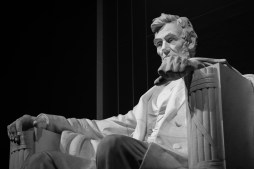How Artists Have Captured Historical Relationships Through the Ages
Art has always been a powerful medium for storytelling, allowing artists to capture complex narratives, including the relationships that shape history. From ancient cave paintings to modern installations, artists have portrayed historical relationships in a multitude of ways, reflecting societal values, cultural shifts, and individual perspectives. This article explores how various art forms have depicted historical relationships over time.
The Origins of Artistic Representation
Dating back thousands of years, early humans used art as a means of communication and expression. Cave paintings in Lascaux, France depict scenes that suggest social interaction and communal hunting strategies among prehistoric humans. These simple yet profound illustrations highlight the interconnectedness of individuals within their communities and set a foundational precedent for how artists would later explore complex relationships.

Classical Art and Historical Narratives
During the classical period, artists began to incorporate more structured narratives into their work. Greek vase paintings often depict myths involving gods and heroes that reflect societal values and human emotions. For instance, works illustrating the Trojan War not only tell stories of love and betrayal but also comment on themes of honor and loyalty—key elements in understanding historical relationships among individuals within cultural contexts.
The Renaissance: Humanism Takes Center Stage
The Renaissance marked a significant shift in how historical figures were represented in art. Artists like Leonardo da Vinci and Michelangelo focused on humanism—the celebration of human potential—and explored emotional depth in their subjects’ relationships. Da Vinci’s “The Last Supper” is an exemplary portrayal where each disciple’s reaction to Jesus’ announcement reveals intricate dynamics among them while highlighting themes of trust, betrayal, and camaraderie inherent in human relationships.
Romanticism: Emotionally Charged Connections
In the 19th century, Romanticism emerged as an artistic movement that emphasized intense emotion as an authentic source of aesthetic experience. Artists like Eugène Delacroix utilized vibrant colors and dramatic compositions to express passionate connections between individuals against tumultuous historical backdrops. His painting “Liberty Leading the People” not only represents revolutionary zeal but encapsulates collective struggle—a powerful reflection on the relationship between citizens and their fight for freedom.
Modern Interpretations: Diverse Perspectives on Relationships
Contemporary artists continue to explore historical relationships through innovative mediums such as photography, mixed media installations, or performance art. Works by artists like Kehinde Wiley challenge traditional portrayals by showcasing modern subjects in historically rich contexts—subverting expectations around race and identity while addressing past injustices that resonate with current social dynamics. This evolution illustrates how contemporary perspectives enrich our understanding of history’s intricate web of relationships.
Through various eras and styles, art has served as both a mirror reflecting society’s complexities as well as a lens through which we can examine past interactions among people across time periods. By studying how these historical relationships are portrayed in art we gain insight not only into our histories but also into our shared humanity.
This text was generated using a large language model, and select text has been reviewed and moderated for purposes such as readability.


